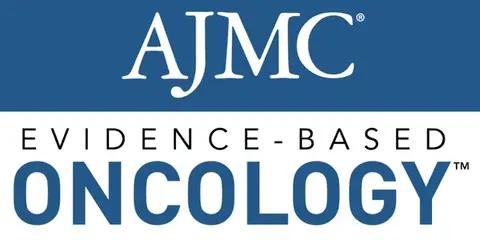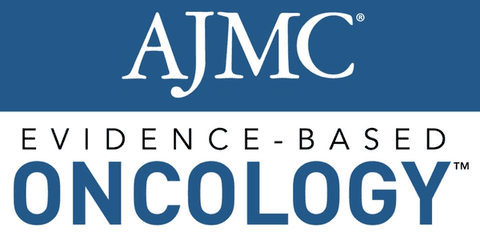Article
NCCN Releases Clinical Practice Guidelines for Pediatric ALL
Author(s):
The National Comprehensive Cancer Network (NCCN) Thursday released its first set of clinical practice guidelines for pediatric cancer, saying the new acute lymphoblastic leukemia (ALL) guidelines are the first of several planned to address various pediatric cancers.
The National Comprehensive Cancer Network (NCCN) Thursday released its first set of clinical practice guidelines for pediatric cancer, saying the new acute lymphoblastic leukemia (ALL) guidelines are the first of several planned to address various pediatric cancers.
ALL is a blood cancer that affects about 2900 people aged 21 years and younger in the United States annually; it is the most common pediatric cancer, accounting for 35% of all pediatric cancers. Treatment typically lasts 2 to 3 years with multiagent chemotherapy regimens and is made up of 4 components: remission induction, consolidation, maintenance, and central nervous system—directed therapy.
Decades ago, ALL was always a terminal diagnosis, but propelled by new treatments such as targeted therapy and immunotherapy, current cure rates are about 90%. In 2017, the FDA approved the first chimeric antigen receptor (CAR) T-cell therapy for B-cell precursor ALL, Novartis’ tisagenlecleucel (Kymriah). A novel way to treat cancer, CAR T-cell therapy genetically reprograms a patient’s own white blood cells to attack tumor cells.
The NCCN said the guidelines are “the most comprehensive and up-to-date evidence-based, consensus-driven guidelines for treating children with cancer outside of a clinical trial setting.”
“We are publishing the NCCN Guidelines for Pediatric ALL in response to a growing global need for protocols that ensure children with cancer receive the best care possible, no matter where they’re treated,” said Robert W. Carlson, MD, NCCN’s chief executive officer, in a statement. However, he said, the fact that fewer children are being treated within clinical trials means that there is a “need for treatment guidelines that set sufficient and appropriate standards for care.”
He later elaborated to The American Journal of Managed Care® that, “Historically, NCCN Guidelines have not included the pediatric malignancies because the vast majority of patients were treated on clinical trials. As the number of pediatric patients on trials in the US has declined, especially in the highly curable malignancies, and as the NCCN guidelines are increasingly utilized outside the US, the need for pediatric guidelines has emerged.”
The release of the guidelines are the second piece of recent news regarding pediatric cancer. A recent study reported that pediatric patients typically wait the longest to have newly approved oncology drugs, with a median of 6.5 years in between the first clinical trial in adults to the first clinical trial in children.
“Our recommendations include a strong focus on supportive care, so hopefully patients will not experience severe side effects. Pediatric ALL survivors live a long time; we have to consider long-term effects as well,” said Hiroto Inaba, MD, PhD, member, St. Jude Children's Research Hospital, and vice chair of the NCCN panel that developed the guidelines.
According to Patrick Brown, MD, chair of the NCCN panel and associate professor of oncology and pediatrics, and director of the pediatric leukemia program at The Sidney Kimmel Comprehensive Cancer Center at Johns Hopkins, supportive care includes, but is not limited to:
- Prevention of infections
- Prevention and management of chemotherapy-specific side effects (for example, blood clots with asparaginase, or peripheral neuropathy with vincristine)
- Safe blood transfusion practices
- Optimal nutritional support and nausea prevention
- Pain management
"Improvements in supportive care in pediatric ALL have been a major contributor to successful outcomes for patients, both in terms of survival and in quality of life for the increasing number of survivors!” emphasized Brown.
The NCCN Guidelines for Pediatric ALL run from birth into young adulthood. They were designed to overlap with the NCCN Guidelines for Adult ALL and harmonize treatment approaches for patients in the overlapping age range. The recommendations are categorized by risk level, which can also be age-related. The highest risk is linked to those diagnosed as infants or between the ages of 10 and 21 years.
“One unique and useful component of these guidelines is the identification of vulnerable populations, and assembling the best supportive care advice for them,” said Brown. “Patients with Down syndrome and very young infants, for example, face particular challenges that we address.”
NCCN said it will keep adding to its pediatric cancer guidelines until they address at least 90% of all incident childhood cancers. The next set to be released will be guidelines for pediatric Burkitt lymphoma. NCCN is also assembling panels for pediatric Wilms tumor and pediatric Hodgkin lymphoma.
There are also plans to adapt the NCCN Guidelines for Pediatric ALL into guidelines aimed at low- and middle-income countries, which grapple with limited resources.
“In places where resources are limited, oncologists need to know they are using the available options optimally. Our plans for resource-stratified versions of the NCCN Guidelines for Pediatric ALL will provide the information they need to make the right call,” said Carlson.





